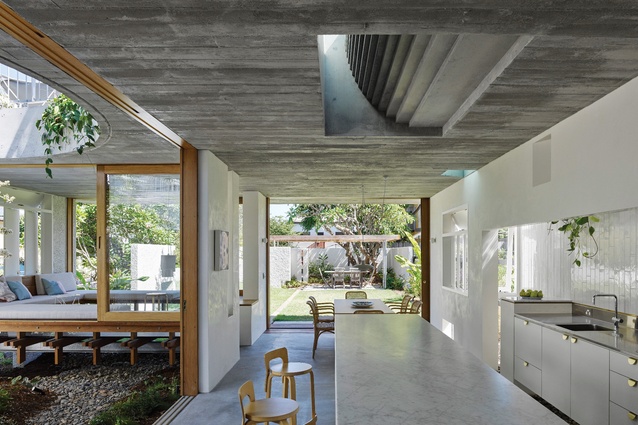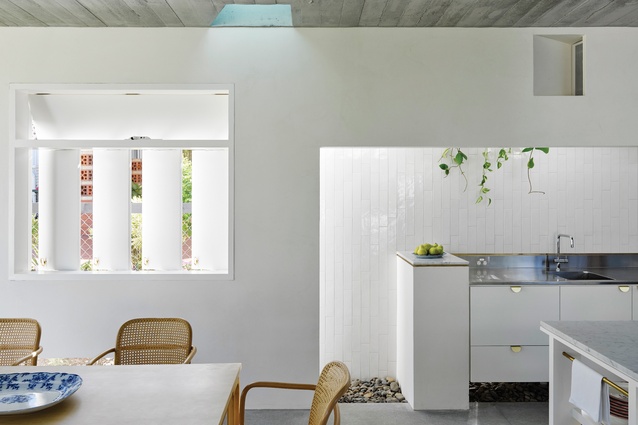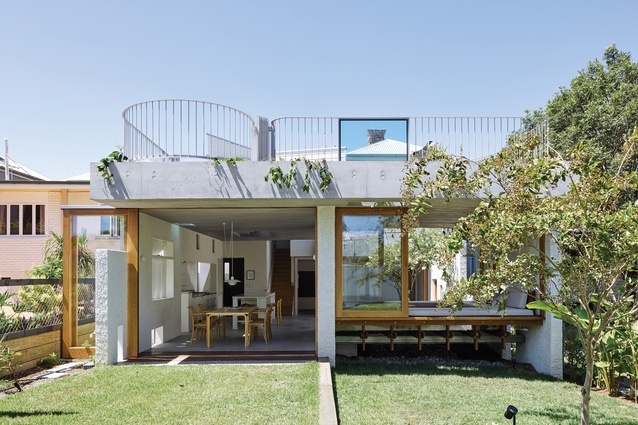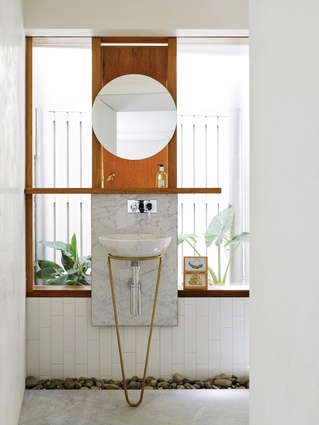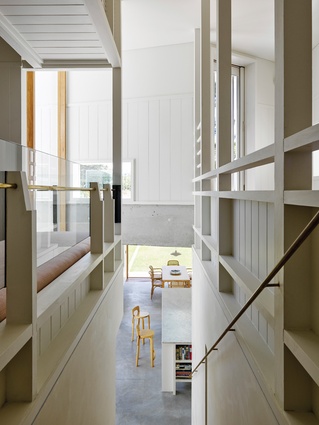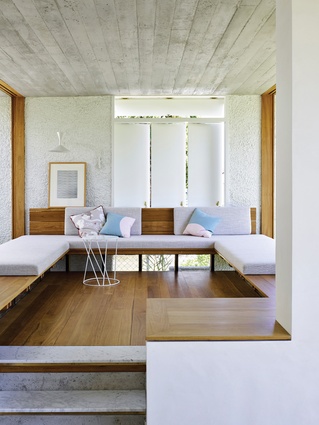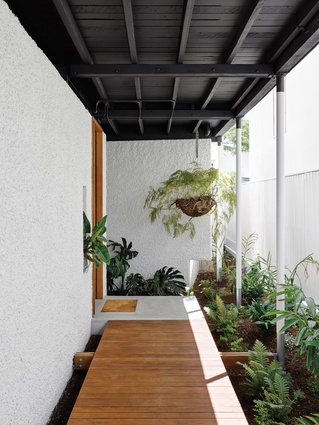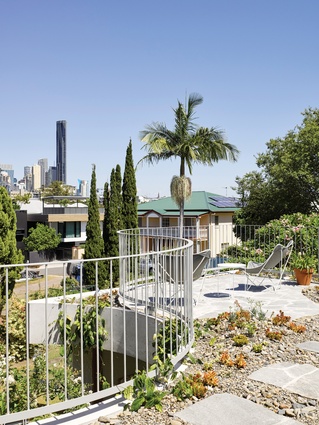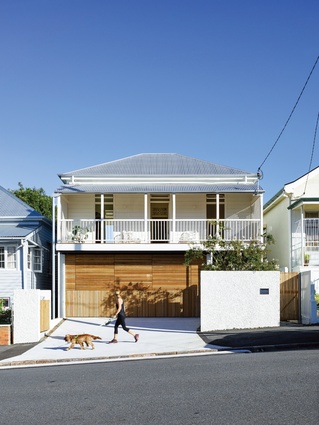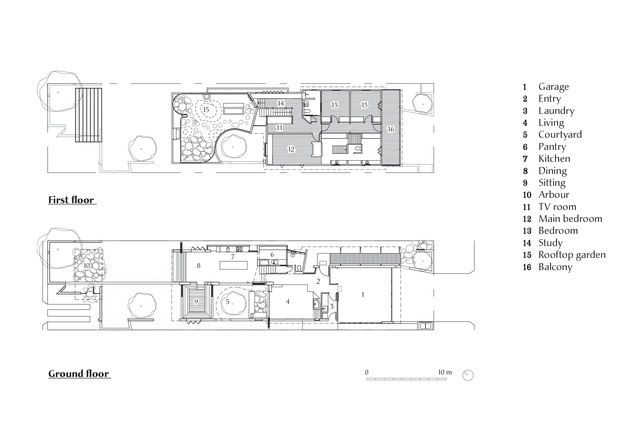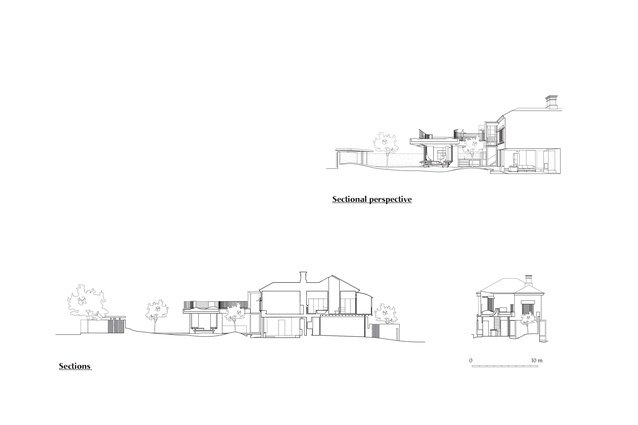Ruin in the landscape: Gibbon Street
Imbued with an Italian influence, this worker’s cottage in Brisbane has been transformed into an imaginary “ruin” that honours the poetics of decay.
Before embarking on his first independent residential project, Brisbane architect Sandy Cavill travelled to Italy to indulge in a miniature “grand tour” of architecture. His aim was to visit the work of Carlo Scarpa and experience firsthand those architectonic qualities with wh ich the Italian’s work is synonymous: stereotomic forms forged in concrete and stone, masterfully combining sunshine and landscape.
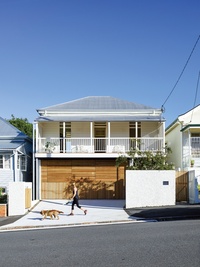
At the same time, he was immersed in the splendour of Italian antiquities (famously adapted to scenes of ruin by eighteenth-century artist, Giovani Battista Piranesi) and these had an equal impact upon his sub-conscious mind. On return to his subtropical home city, Sandy began the conceptual design of Gibbon Street house, recalling those impressionable weeks abroad. What emerged were the beginnings of an imaginary “ruin” and an extraordinary architectural intervention honouring the poetics of decay.
The worker’s cottage to which Sandy was tasked to respond, while a world away from the European architecture of his tour, is ironically embedded in the Italian migrant community of Brisbane. Pointing to evidence up and down the street of the Australian vernacular adapted to sites more attuned to an Italian sensibility, Sandy muses that the Italian influence on the built environment in New Farm is deeply rooted and the sense of community is strong.
The architectural response acknowledges such cues as much as it reveals the influences of his tour. Combined, they inform a series of interventions that saw the vernacular cottage pre- served and raised and new rooms, ordered by a series of masonry garden walls and concrete platforms, inserted into the undercroft and backyard.
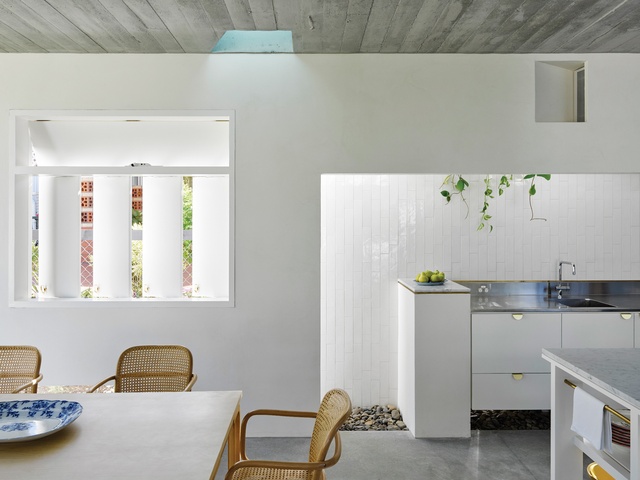
Arrival into the ground-floor spaces of the cottage undercroft coincides with the precise moment that attention returns to the compelling realm of the exterior. Focus is drawn to a central garden courtyard as a crepe myrtle tree is thrown into the spotlight against the shadow cast by the sweeping curve of the concrete parapet above. The boundary wall captures the sunlight and reinforces the presence of the “ruin,” represented as a series of rendered block walls that are threaded through the plan.
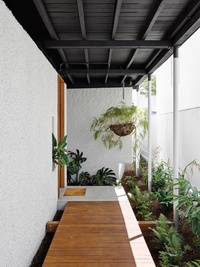
Visual transparency is maintained longitudinally, with backyard vistas framed by distant thresholds. Passage is encouraged toward the light and landscape, a pathway at the courtyard edge stepping up from the living room into the kitchen and dining room. The journey culminates in the sitting room, a perfectly scaled gathering space that hovers over a miniature rolling landscape.
The fluid spaces that skim the central courtyard, including the kitchen, dining room and sitting room, are held together by a monolithic green roof. Imprinted on the roof’s board-marked underbelly are the striated textures of old cottage floorboards. The rawness of this ceiling surface contributes to the idea that the polished spaces of the interior have taken up shelter inside a vacant and forgotten shell.
As creepers lower their glossy tendrils from the roof garden above, the belief that the landscape could threaten the building’s return to ruin becomes powerfully suggestive. Where apertures are introduced in the ceiling, elements of accentuation and drama follow. Above the kitchen bench, a light well is cast like a vertical sundial in the concrete, bending the light down into the interior and offering vistas skyward.
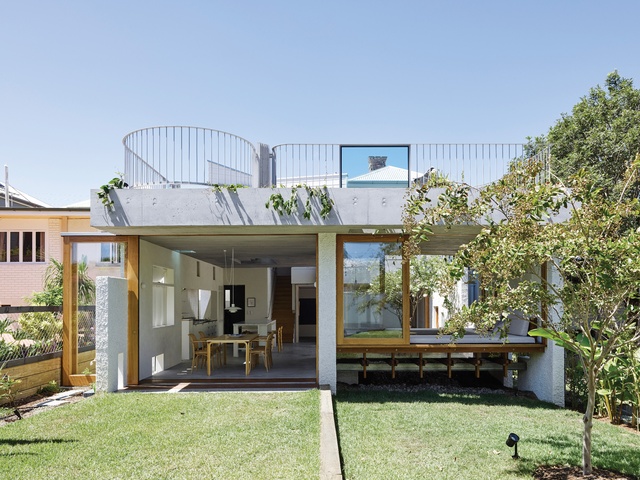
Suspended between the garden wall and grounded platform and with sides open to the courtyard and backyard, the sitting room is positioned to offer “a genuinely external experience.” The scale, materiality and, most of all, the overwhelming presence of the garden recall some of Brisbane’s most memorable domestic sitting rooms.
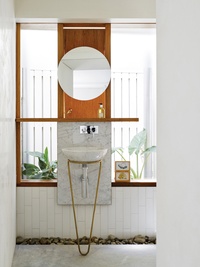
As conversation turns to Sandy’s experience working with Donovan Hill, we talk about his thoughts on room-making and the projects that have influenced his thinking, including D House (2000) and Z House (2008, which he worked on as a student). “When I think about that project [D House], the quality we tried to emulate was the sense of privacy and sanctuary … and [finding] a way of making a series of private gardens without making a fortress, without ruining the streetscape.”
A place of sanctuary revealed through the synergy of landscape and architecture is precisely what has been achieved at Gibbon Street House. What further enriches the site is the civic-minded attitude to place that upholds the qualities observed of this tight-knit community, neighbourly interactions across chainwire fences and the passive interaction between the life of the home and the street.
What resonates deepest is the powerful idea that the building occupies a fleeting moment in the passage of time. As the edges of the building become indistinguishable from the garden, the presence of the “ruin” is strengthened and, like a Piranesi etching brought to life, the experience of the occupant is heightened, a counterpoint to the sublime wilderness slowly engulfing this remarkable structure.
This article was first published in ArchitectureAU.com.

